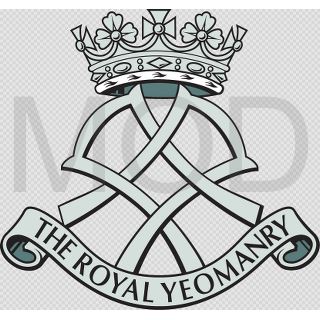The Royal Yeomanry, British Army: Difference between revisions
Jump to navigation
Jump to search
No edit summary |
No edit summary |
||
| Line 3: | Line 3: | ||
''' {{uc:{{PAGENAME}}}} ''' | ''' {{uc:{{PAGENAME}}}} ''' | ||
History: Raised 1 April 1967 as the Royal Yeomanry Regiment (Volunteers). It to was to be regarded as the successor to the Royal Wiltshire Yeomanry, the Sherwood Rangers Yeomanry, the Kent and Sharpshooters Yeomanry, the North Irish Horse, and the Berkshire and Westminster Dragoons. In 1971 the title was shorterned to the present one. | History: Raised 1 April 1967 as the Royal Yeomanry Regiment (Volunteers). It to was to be regarded as the successor to the Royal Wiltshire Yeomanry, the Sherwood Rangers Yeomanry, the Kent and Sharpshooters Yeomanry, the North Irish Horse, and the Berkshire and Westminster Dragoons. In 1971 the title was shorterned to the present one.<br> | ||
Regimental Headquarters: Tigers Road, South Wigston, Leicester. | |||
Revision as of 11:59, 16 January 2022
| Heraldry of the World |
| British heraldry portal Civic heraldry of the United Kingdom |
|
THE ROYAL YEOMANRY, BRITISH ARMY
History: Raised 1 April 1967 as the Royal Yeomanry Regiment (Volunteers). It to was to be regarded as the successor to the Royal Wiltshire Yeomanry, the Sherwood Rangers Yeomanry, the Kent and Sharpshooters Yeomanry, the North Irish Horse, and the Berkshire and Westminster Dragoons. In 1971 the title was shorterned to the present one.
Regimental Headquarters: Tigers Road, South Wigston, Leicester.
Official blazon
Origin/meaning
Contact and Support
Partners:
Your logo here ?
Contact us
© since 1995, Heraldry of the World, Ralf Hartemink 
Index of the site
Literature: Image from Defence Brand Portal Ministry of Defence












